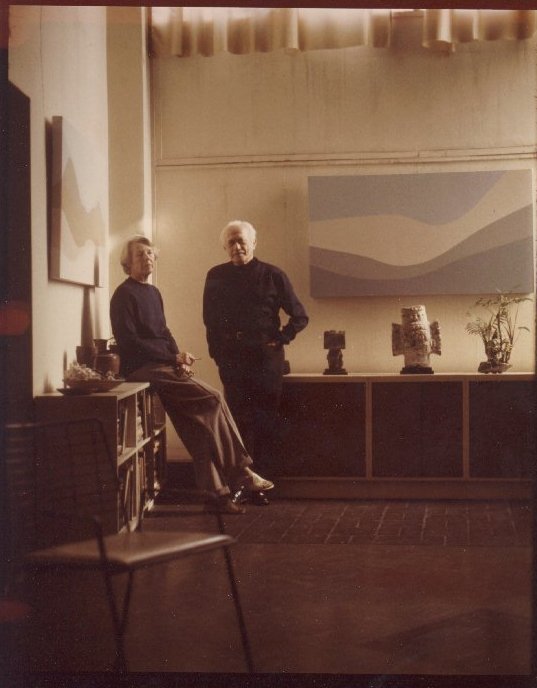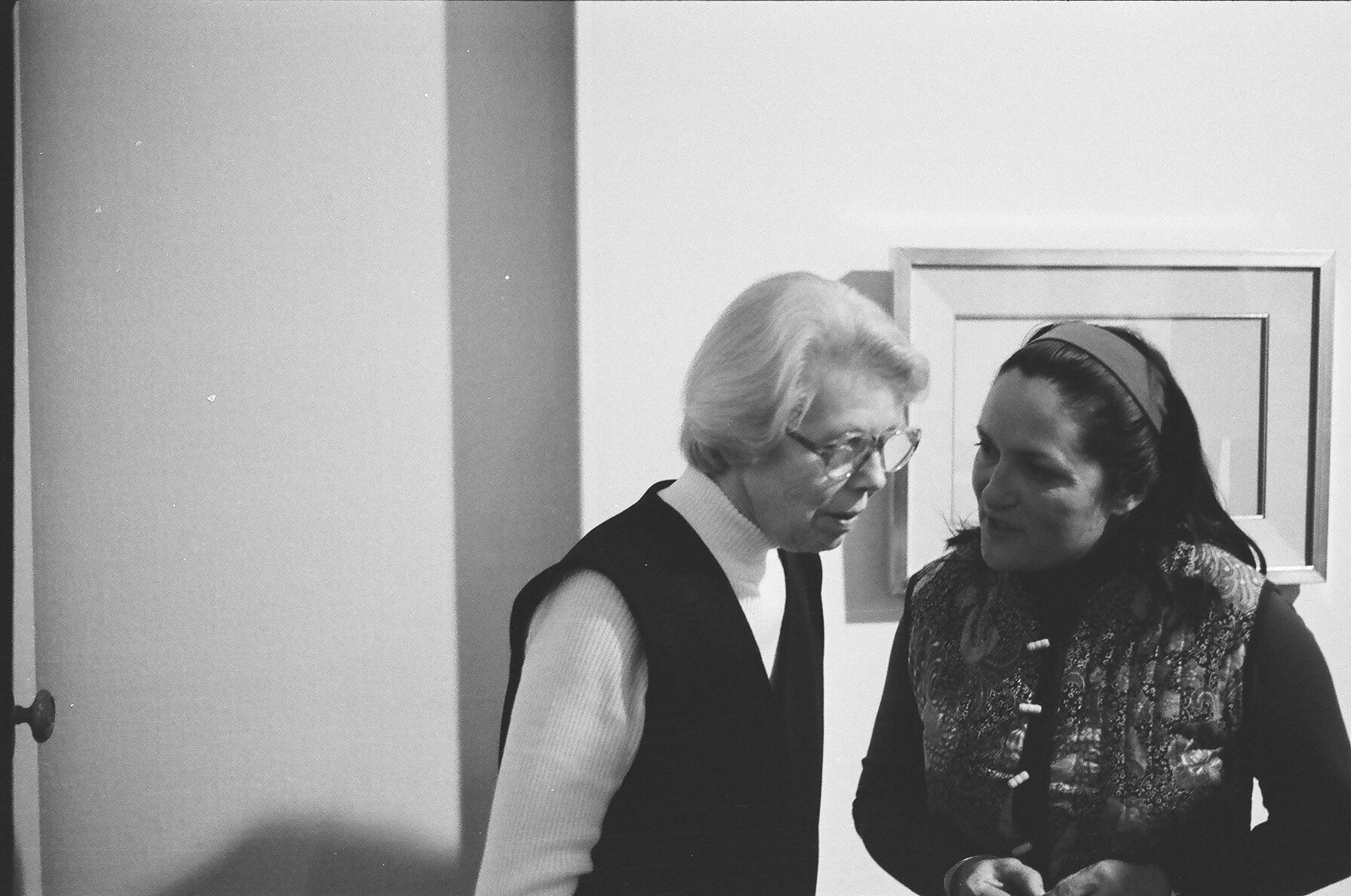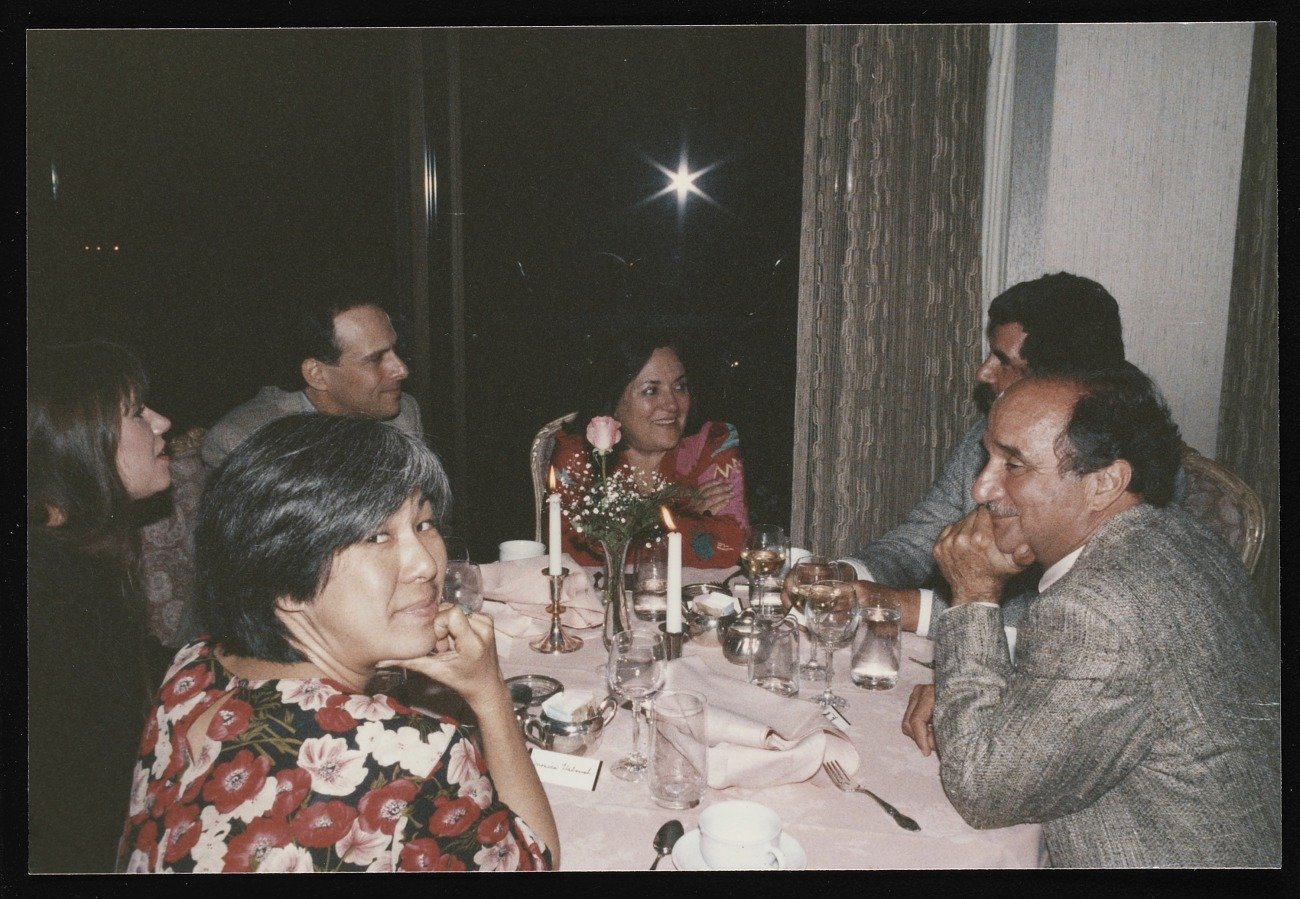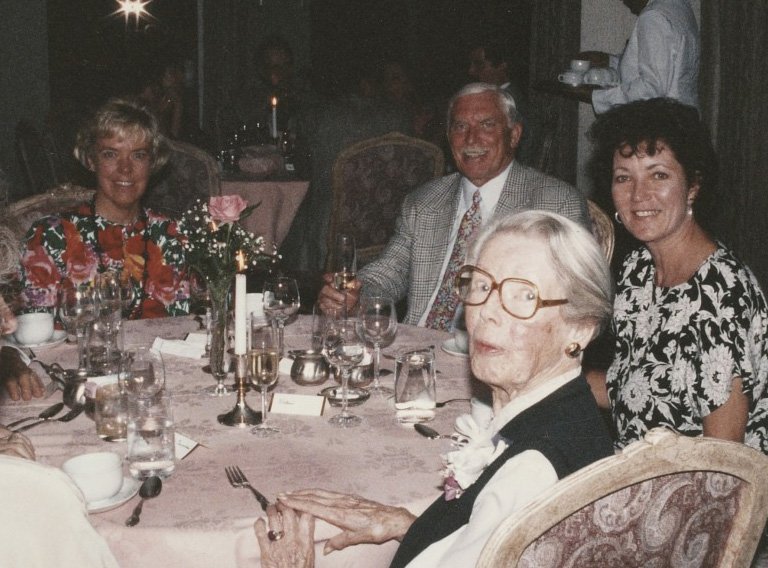the early History of the feitelson / lundeberg art foundation
Lorser feitelson and helen lundeberg established one of the first artist-endowed foundations west of the mississippi,
and in 1979, the year following Feitelson’s death, the Feitelson / Lundeberg Art Foundation was incorporated. For the first dozen years, a crucially formative period, the course of the foundation was directed by three dedicated individuals: artist Helen Lundeberg, who was Feitelson’s wife and equally distinguished partner; their friend and professional associate, art curator and administrator Josine Ianco-Starrels; and attorney Monroe Price, who was well versed in art and law and actively involved in Los Angeles’ creative community.
For Lundeberg, establishing the foundation was a daunting challenge that required her to prepare a full, date-of-death evaluation inventory of both artists’ work and their art collections, among other onerous tasks. Difficult as that must have been, she knew that it was the responsible, forward-looking way to honor her husband, handle their estate, and preserve their artistic legacy. Initially, it was also a constructive means of dealing with her grief so that she could return to her own work, with the support of trusted friends and fellow board members, but she remained actively involved with FLAF throughout her productive life.
First among her foundation colleagues was Josine Ianco-Starrels, who died in 2019 at the age of 92 and is fondly remembered as a fearless, public-spirited force in Los Angeles’ art scene. A champion of talented, under-recognized artists of all ages and colors, she began to exhibit Feitelson’s and Lundeberg’s work in the mid-1960s while directing the Lytton Center of the Visual Arts. Their friendship grew as Ianco-Starrels moved on to direct the art gallery at California State University, Los Angeles and the Municipal Art Gallery in Barnsdall Park, followed by an appointment as chief curator at the Long Beach Museum of Art. Best known for her work at the city-funded Municipal Art Gallery, she presented a closely watched exhibition program there from 1975 to 1987, including a critically acclaimed retrospective exhibition of Lundeberg’s work in 1979.
Despite Ianco Starrels’ public presence at the Muni, she made important contributions to FLAF throughout her tenure. While serving as successor co-trustee of the two artists’ trusts, she became deeply committed to the goals and purposes of the foundation as a resource for art education in Southern California. To that end, she created and supervised two programs funded by the foundation and administered by the Municipal Art Gallery. One program paired master artists with apprentices; the other provided scholarships for minority students. She moved on professionally and relocated to Oregon after her retirement in 2000 but continued to serve the foundation as long as possible.
The third inaugural director, Monroe Price, also brought valuable expertise to the board of the foundation. A Yale-educated attorney, he covered a considerable amount of legal and geographic territory during his long career and became a prolific writer, speaker, and educator. During the 1970s in Los Angeles, Price was particularly interested in and engaged with American Indian Law, but he also became an advocate of Latin American artists and founded a group called Los Angeles Lawyers for the Arts, which provided free legal services for artists and art groups.
The composition of the board changed significantly in 1992, when Price resigned and two new directors, museum director Henry T. Hopkins and businessman Murray “Mickey” Gribin, arrived with professional gravitas, financial acumen, and fresh ideas.
At the time, Hopkins was directing the Frederick S. Wight Art Gallery at UCLA and approaching the end of his career, but he had an impressive record as a pioneering gallery owner and champion of adventurous contemporary artists in Los Angeles and beyond. After serving as an assistant curator and educator at the Los Angeles County Museum of History, Science and Art, he became director of the Fort Worth Art Center Museum and the San Francisco Museum of Modern Art, which organized a dual exhibition of Feitelson’s and Lundeberg’s work that traveled to UCLA. As secretary of FLAF, Hopkins encouraged the foundation to join Artist Endowed Foundations Initiative and co-chaired the search for an art dealer to represent both artists. He also helped to give Feitelson and Lundeberg a lasting presence at UCLA by spearheading a $50,000 scholarship fund in the foundation’s name and a $5,000 scholarship granted annually to a student concentrating on painting.
Gribin, who became the financial officer of FLAF, developed a passion for art while proving himself as an enterprising businessman. In mid-life he and his wife, Ruth, became ardent collectors and supporters of Southern California’s growing art scene and generous donors to museums and other arts organizations, including the Pasadena Friends of Contemporary Art and the Los Angeles Institute of Contemporary Art. “Mickey” sat on the boards of the Museum of Contemporary Art San Diego and the Hammer Museum and Cultural Center in Los Angeles. At FLAF he joined Hopkins in the foundation’s search for an art dealer, oversaw its bank accounts after Lundeberg’s death, and kept track of auctions offering works by the two artists.
The current board of FLAF is made up of Wendy Van Haerlem, Marian Kovinick, Suzanne Muchnic, and Tom Boles. Learn more about them here.
Images courtesy of:
Lorser Feitelson and Helen Lundeberg papers, circa 1890s-2002, Archives of American Art, Smithsonian Institution.
The Feitelson / Lundeberg Art Foundation.




